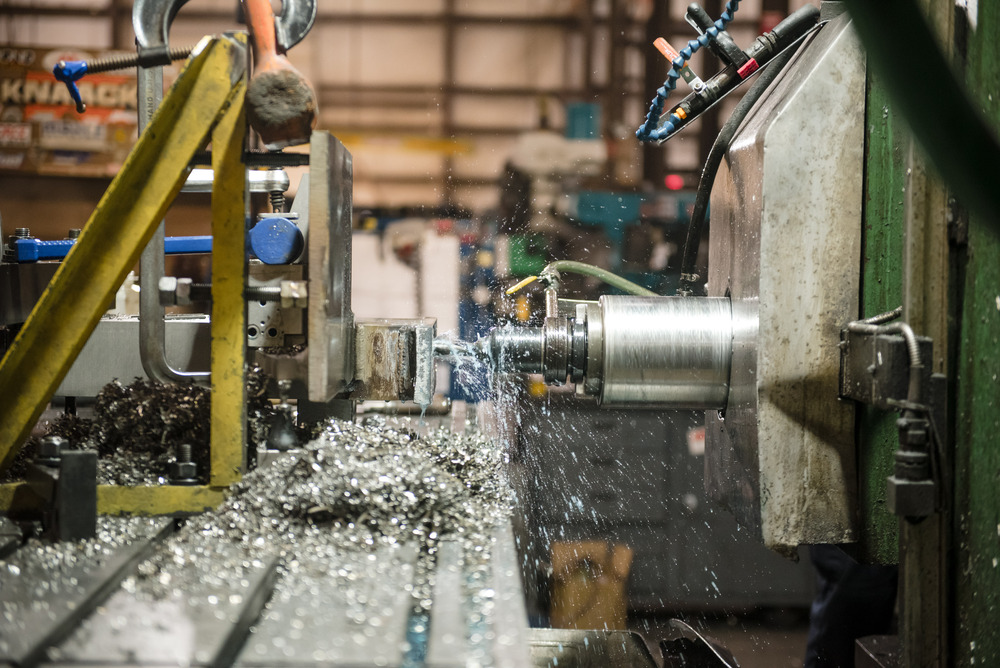Best Practices for Insert Selection When Machining Titanium
Few materials command as much respect in the machining world as titanium. Known for its incredible strength-to-weight ratio and corrosion resistance, titanium is essential in aerospace, defense, and high-performance industrial applications. Carver Machine Works (CMW Global) regularly works with aerospace-grade titanium alloys such as Ti-6Al-4V, where precision and reliability are non-negotiable.

But those same qualities that make titanium valuable also make it notoriously difficult to machine. Titanium resists cutting for several reasons:
- Low thermal conductivity keeps heat concentrated at the tool–workpiece interface, quickly accelerating tool wear.
- Work hardening toughens the surface with each pass, compounding tool stress if cutting conditions aren’t carefully controlled.
- Chemical reactivity encourages titanium to bond with tool materials, forming built-up edges or damaging coatings.
- Poor chip control produces long, stringy chips that can tangle tools and block coolant flow.
Together, these challenges create a clear machining dilemma: how to remove material efficiently without sacrificing tool life or part quality. At CMW Global, experience shows that insert selection is central to finding that balance.
Insert Geometry: Building the Foundation for Success
Tool geometry is often the deciding factor in whether a titanium cut goes smoothly or ends in premature tool failure.
- Sharp cutting edges reduce cutting forces and minimize work hardening.
- Positive rake angles lower resistance and improve surface finish, while negative rake inserts typically generate more heat.
- Round inserts distribute forces evenly, eliminating weak corners and extending durability.
- Chipbreaker design must balance heat dissipation with chip control — too aggressive, and heat builds up; too light, and chips tangle.
At CMW Global, machinists often lean on these principles to stabilize cutting conditions and achieve repeatable results across aerospace and defense components.
Cutting Speeds and Feeds: Finding the Sweet Spot
Unlike softer alloys, titanium doesn’t tolerate brute force. Instead, it rewards careful balance:
- Low cutting speeds (30–60 m/min) are recommended for Ti-6Al-4V to limit heat buildup.
- Higher feed rates at lower RPMs maintain a healthy chip load, preventing rubbing and work hardening.
- Avoiding tool dwell is critical — even short pauses allow heat to harden the workpiece and damage the tool.
- Consistent engagement toolpaths help stabilize chip loads and prevent tool shock.
CMW emphasizes this “sweet spot” approach in its titanium programs, ensuring both efficiency and part integrity.
Cooling Strategies: Keeping the Heat in Check
Even the best inserts will fail quickly without proper cooling. CMW employs multiple strategies depending on the operation:
- High-pressure coolant (HPC) delivers fluid directly to the cut zone, flushing chips and pulling heat away.
- Minimum Quantity Lubrication (MQL) reduces friction with a fine oil mist, particularly effective in lighter cuts.
- Cryogenic cooling using liquid nitrogen is an emerging method, reducing tool wear and cutting forces in certain titanium operations.
The key is precision — coolant must reach the tool–chip interface directly to make an impact.
Coating Choices: Matching Tools to Titanium’s Reactivity
Coatings can improve tool life, but in titanium, not all coatings behave the same way.
- TiAlN coatings offer hardness and heat resistance, a common choice for production titanium machining.
- Diamond-Like Carbon (DLC) provides low friction, helping resist built-up edge in select operations.
- Uncoated carbide sometimes outperforms coated tools, especially at lower cutting speeds with effective coolant.
- Multilayer coatings are still evolving but hold promise in balancing hardness with anti-adhesion properties.
At CMW Global, coating decisions are made based on the specific job — there is no universal answer, only careful matching of insert to application.
Balancing Economics: The Cost of Tool Life
Titanium machining is as much about economics as it is about metallurgy. Every insert choice carries cost implications:
- Initial cost vs. tool life: Premium inserts often outlast budget alternatives, offsetting their higher price with fewer tool changes.
- Material-specific ROI: For shops like CMW that routinely handle titanium, investing in inserts engineered for titanium pays dividends in consistency and throughput.
Ultimately, success in titanium machining comes from optimizing process efficiency — not just individual tool cost.
Key Principles to Remember
- Use sharp-edged carbide inserts with positive rake to reduce cutting forces.
- Keep speeds low and feeds steady to prevent rubbing and work hardening.
- Apply high-pressure or advanced cooling methods to control heat and manage chips.
- Match coatings — or lack thereof — to the exact machining conditions.
- Consider economic trade-offs in tool selection to maximize overall process efficiency.
Final Thoughts
Titanium machining will never be “easy,” but it is entirely manageable with the right strategies. At Carver Machine Works, experience shows that successful outcomes come from tailoring every detail, insert geometry, speeds, cooling, and coatings, to titanium’s unique behavior. This commitment allows CMW Global to deliver precision aerospace and defense components with both reliability and efficiency.

